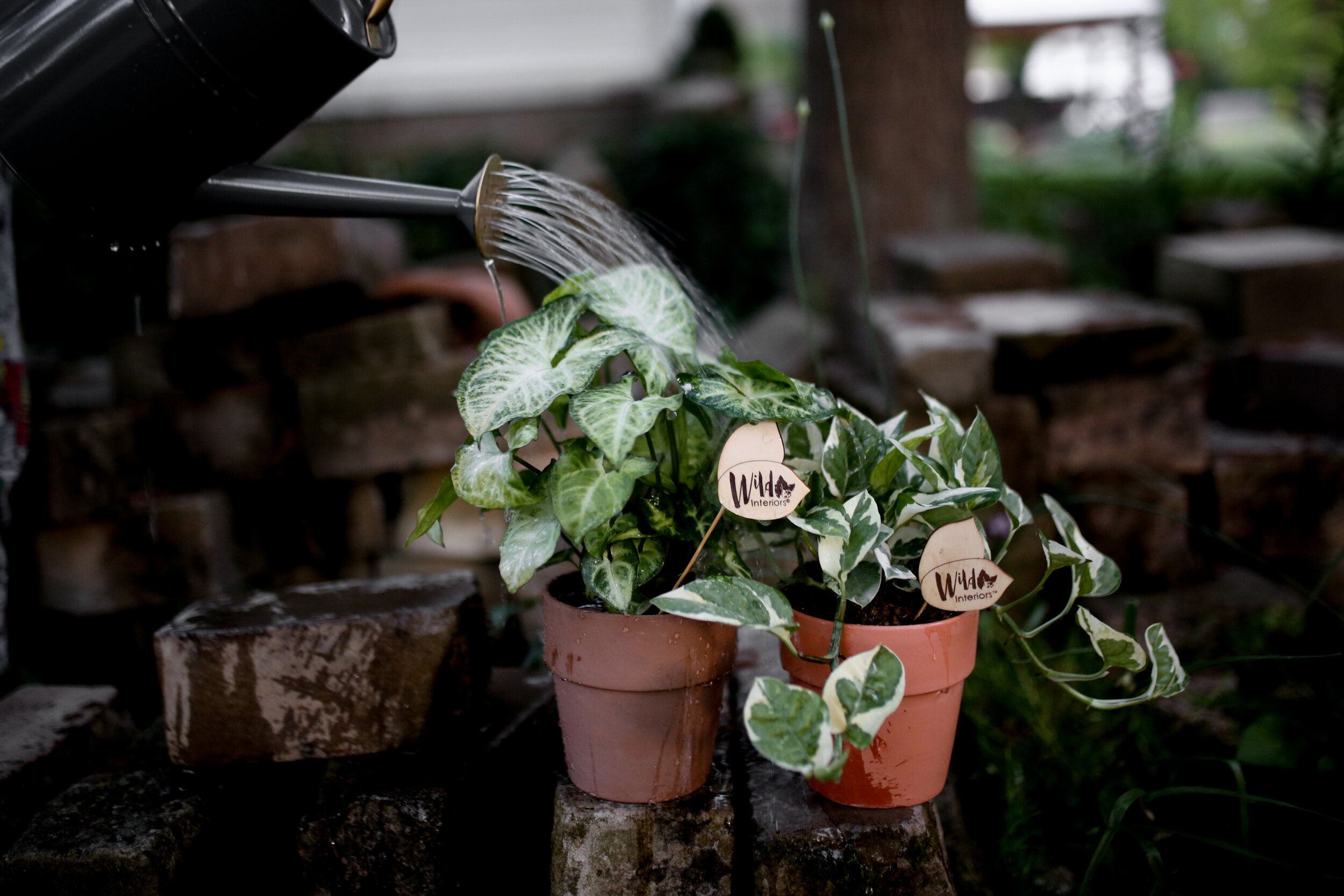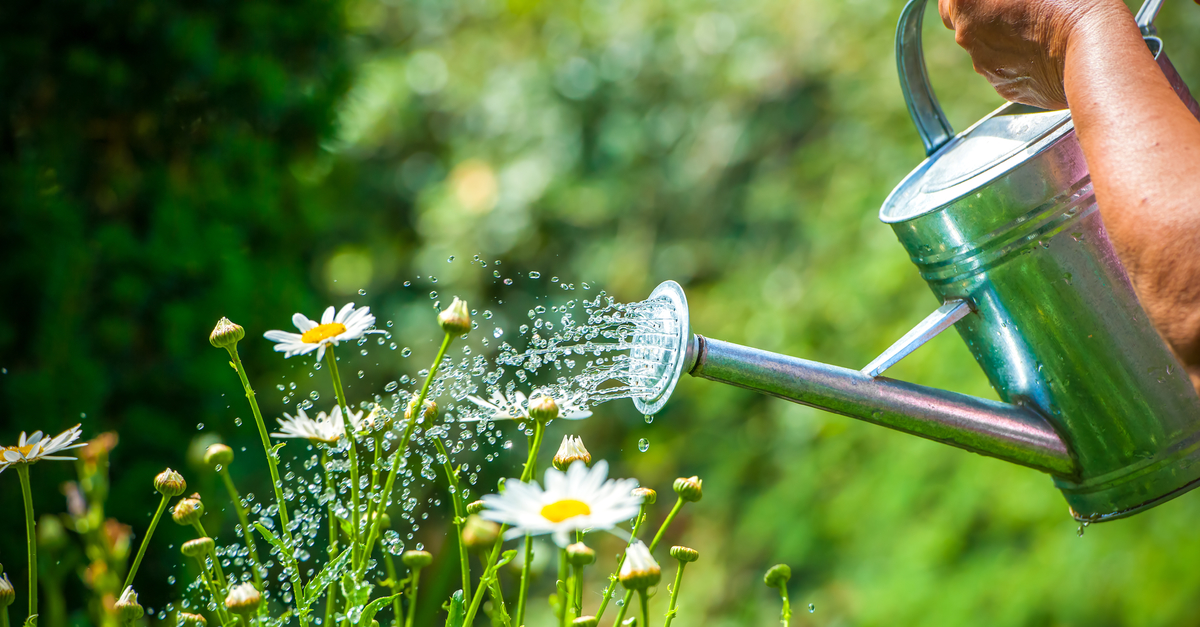
Have you ever wondered what kind of water you should use to bottom-water your plants? The choice of water is crucial, even though it could seem like a minor matter.
Rainwater is the ideal liquid for bottom-watering plants. The plant’s growth is influenced by the water’s quality. Different types of water, including tap water, pool water, well water, and mineral water, contain varying levels of minerals and nutrients, and not all are suitable for watering plants at the soil’s base.
When it comes to watering your plants, the nutritional and mineral content of the water is crucial. This article will provide a helpful overview of the types of water that are best for bottom-watering your plants and why.
Table of Contents
Types of Water for Bottom Watering Plants:
We frequently focus more on factors like fertilizers, growing environments, and nutrients when taking care of plants.
What type of potting soil to use, which fertilizer to use to hasten plant development, etc.
How many of us, though, really pay attention to the water’s quality? One of the most important elements that can have a big impact on a plant’s health is water.
We must therefore be especially careful about the type of water we use on our plants.
We’ve included a few different water types that gardeners typically employ for irrigation reasons below.
1. Rainwater:
Rainwater is the finest kind of water for plants that need bottom irrigation, but only if it is not overly acidic.
Acid rain will harm the plant’s physical structure as well as render the soil hazardous and acidic. Acidic rain is typically only observed in heavily polluted locations.
The pH of rainfall typically ranges from 5.5 to 6.5, making it only mildly acidic. This minor acidity benefits plants since it encourages the plant’s capacity to access nutrients.
In addition, rainwater has trace amounts of the minerals calcium, magnesium, and iron.
It has little in the way of minerals, but it is also free of pollutants like fluoride and chlorine.
I’ve tried using rainfall to water the ground, and it has always worked. The main issue is that setting up a workable system for gathering the water could be challenging.
However, it could be against the law to collect rainwater in some states.
The only states that have strict regulations to prevent homeowners from collecting and using rain that falls on their land are Colorado and Utah.
2. Pool water
Only once the chlorine is removed from the pool water can it be used to bottom-water plants.
When the typical watering supply is unavailable, watering plants with pool water is a practical approach to reuse the water rather than flushing it down the drain.
However, the chlorine present in swimming pool water can adversely impact plants’ ability to grow and function normally.
If present in larger amounts, it is extremely harmful to plants.
Chlorine is first transformed into chloride in the soil, and then it is absorbed by roots and distributed throughout the entire plant.
However, the water in the pool is heavily chlorinated, which further boosts the level of chlorine.
3. Distilled Water:
Use of distilled water is the recommendation that is made the most frequently. Similar to deionized water, this sort of water is treated with UVC radiation, which has a germicidal effect.
To get rid of contaminants and minerals, water is heated to a boil, then the steam is condensed back into a liquid during the distillation process.
Since distilled water lacks nutrients, it serves no purpose for plants other than to hydrate them and damp the soil.
This is by far the cleanest water you can give your plants, but it takes some labor and costs extra to boil the water.
Since carnivorous plants are accustomed to existing in soils with low nutrients, distilled water is the best choice for these plants.
Carnivorous plants frequently consume insects for food. However, since acidophilic plants require nutrients in their water, using distilled water may not be a good idea in this scenario.
If you want to use distilled water, I advise you to follow your fertilization schedule to make sure your plants are receiving the necessary minerals.
4. Tap Water:
A tap or water dispenser valve is used to supply municipal or tap water.
It originates from a treatment facility where the water is cleaned and impurities are removed before being pushed outside and finally reaching our homes.
One of the world’s safest sources of drinking water is in the United States, according to the Centers for Disease Control and Prevention (CDC) (Source).
I believe that if something is safe to drink, it is also safe to water plants. Indeed, I have watered my plants with tap water for years without experiencing any negative impacts on plant diseases.
However, depending on where you live and the surrounding environment, the water from your tap can include toxins. If you have reason to believe it does, you should look into other, more practical water sources for the sake of your health and the health of your plants.
5. Bottled Water:
Water in bottles is sold packaged. There are several types as well: Some salts are more concentrated than others.
Except for the cost, of course, using them for bottom watering plants is really interesting.
Bottled water often has a pH of 7, and if you give plants little sodium, they will flourish luxuriously.
6. Well Water
Groundwater that hasn’t been treated is water. An aquifer, or subterranean layer of permeable rock containing water, is where the well is drilled.
Well water is one of the least expensive options for plants, excluding tap water.
Well As long as the water is purified and free of dangerous chemicals, plants can benefit from it. Well water contains several chemical and biological impurities that can hurt your plants.
Salts, heavy metals (calcium, magnesium, potassium, and lead), human waste, and animal dung are some of the chemical pollutants present in well water.
Various bacteria, protozoa, diseases, parasites, and other biological pollutants can be detected in well water. To the unaided eye, these microbes are invisible.
In addition to these impurities, well water contains a significant amount of nitrates and nitrites. These can be found in sewage, animal waste, and fertilizers.
Through the circulation of groundwater, they get to the well water.
Because of these impurities, the water is hazardous and cannot be used for drinking or for other reasons like irrigation or watering plants.
7. Pond Water
Pond water can be used to water plants after purification, just like well water can. Microbes, fish excrement, aged or decomposing plants, and other pond additives are all present in pond water.
Therefore, it might be hazardous and even harmful to use pure pond water directly on plants.
Why Should We Be Selective When Choosing The Type of Water?

When you begin to investigate which water should be utilized for your plants, you learn that sometimes it’s not as simple as it first appears to be to select the best one.
Plant irrigation can be done in a variety of ways. Better than others are some. Some acids are stronger than others. Different people have chalkier surfaces.
The containers only contain a modest amount of soil.
Due to this, a concentration of compounds that are hazardous to the specimens results when the water contains an excessive amount of poisonous or mineral elements, such as lime or chlorine.
Plants respond by becoming generally weaker. Picking the right water for them is advised to prevent this scenario.
With all of these watering choices in mind, it’s also crucial to make sure the pants aren’t overwatered, and bottom watering helps with that.
Which Water is Most Beneficial for Bottom Watering Plants?
Rainwater is always the greatest option for watering plants because it is natural.
But not always does it rain when we need it.
Additionally, because the pollution would cause the rainfall to become acidic, this approach is not fully advised for cities that have high levels of pollution.
However, using rainwater that has been collected the day after it has rained is preferable.
Bottled spring water ranks as the second-best alternative.
Additionally, you can select to add fertilizer while bottom watering, which will allow the fertilizer’s nutrients to be dispersed evenly throughout the soil and give your plants an extra boost.
Which Water is Least Beneficial For Bottom Watering?
Because it contains so many mineral salts, contaminating substances like lead, and other heavy metals that are poisonous to plants, tap water is thought to be the least advantageous water for bottom-watering plants.
– While distilled water won’t actually harm your plants, you will notice that your plants won’t grow as quickly or as tall as plants watered with rainwater or bottled spring water.
What is Bottom Watering?
distilled water
Chemical pollutants present in well water include salts, heavy metals (calcium, magnesium, potassium, and lead), human waste, and animal feces.
- Various bacteria, protozoa, diseases, parasites, etc. are examples of biological pollutants present in well water. To the naked eye, these microbes are invisible.
- In addition to these impurities, well water has a lot of nitrates and nitrites. Animal waste, human sewage, and fertilizers all include them.
- Because of groundwater flow, they can get the well water.
- Since the water is poisonous as a result of these impurities, it cannot be utilized for drinking or for other activities like irrigation or plant watering.
The Takeaway
Pond water can also be purified and used to water plants, just like well water. Fish waste, aged or decomposing plants, bacteria, and other pond additives are all present in pond water.
Since pure pond water is extremely poisonous, using it directly on plants can be hazardous.
When you begin to look into which water should be utilized for your plants, you learn that it’s not always as simple as it first appears to pick the best one.
FAQ
How long should tap water sit before using it to water plants?
let it sit out for at least 24 hours to lessen the possibility of dangerous compounds in the water.
Why is tap water bad for plants?
Tap water can be harmful to plants, even if humans could use it to relieve their thirst. Several chemicals are added to tap water to make it safe for us to drink, but these compounds are toxic to plants. Fluoride, chlorine, and other contaminants may be found in tap water.
What type of water is best for plant growth?
Rainwater and bottled spring water are your finest options for giving your plants the best care possible.
Your plants won’t actually be harmed by distilled water, but you’ll notice that they won’t grow as tall or as quickly as ones that are irrigated with rainwater or bottled spring water.
Do plants grow better with tap water or distilled water?
When compared side by side, plants watered with distilled water develop more quickly and robustly than those irrigated with tap water. It is the “Best Water for Indoor Plants,” in our opinion. Watered with pure distilled water, plants typically develop more leaves and grow more quickly.
